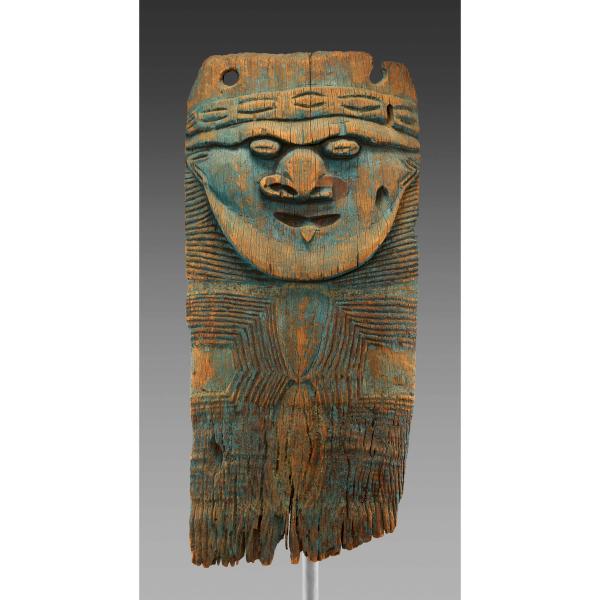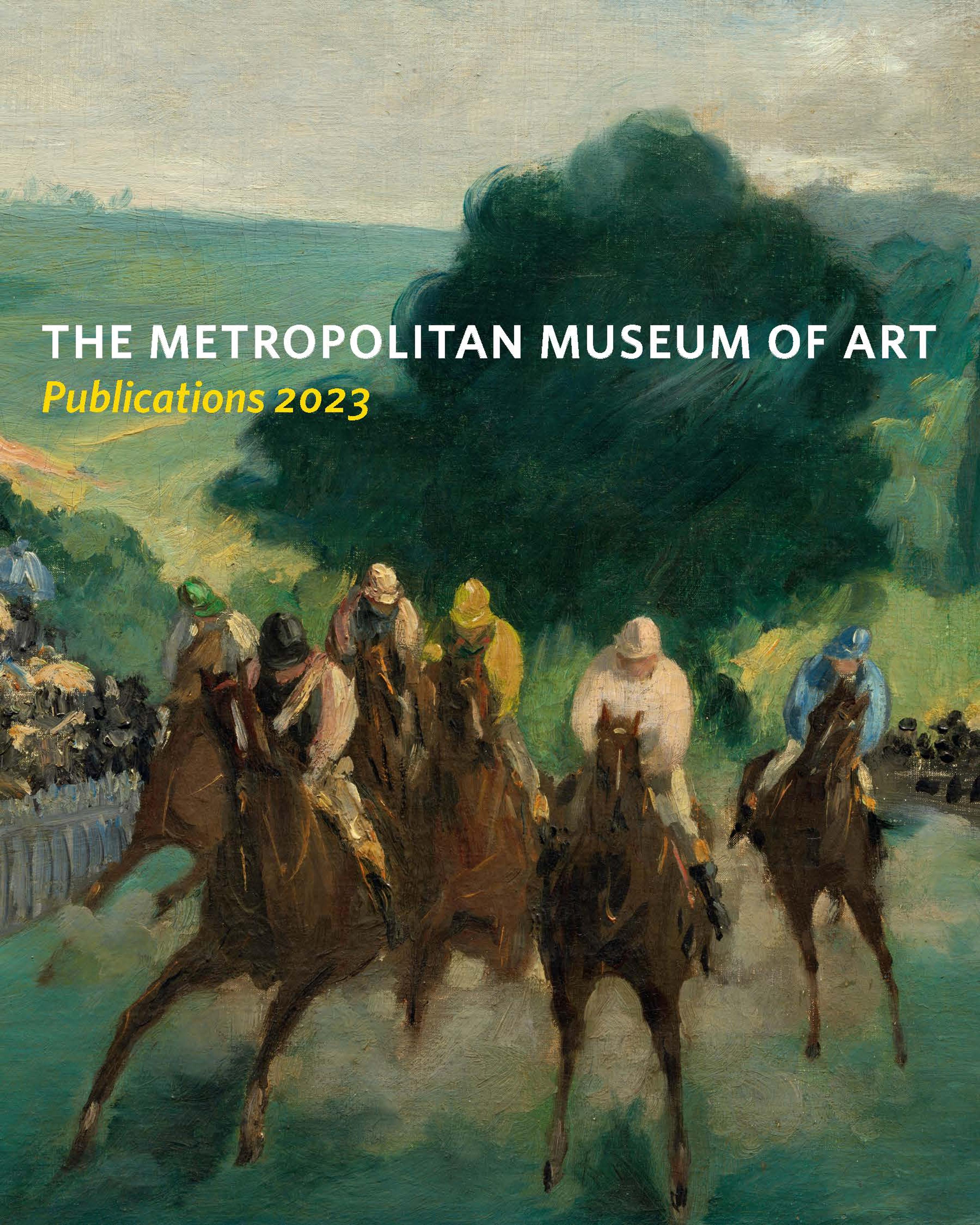Door board (jovo)
Kanak societies were formerly ruled by hereditary chiefs who held both political and spiritual authority and were highly invested in maintaining productive links with the ancestral forbears of the village. The house of the chief was located at the center of every Kanak village and was designed to embody both the physical and metaphysical aspects of his ancestral authority. They were large circular structures with towering conical roofs, crowned with carved finials that were visible from afar. The entrances and interiors of chief’s houses were highly embellished with a variety of sculptural elements that included elaborately carved door boards, like these, that flanked the principal doorway. Carved as separate elements, door boards were lashed at each side of the entrance to the massive supporting posts and attached with lengths of fiber that passed through large holes; the bases of door boards were embedded directly into the ground. Almost all surviving Kanak door boards depict human images with short, broad heads and rectangular bodies adorned with geometric designs. Carved in pairs, they portray recently deceased high-ranking individuals (which could be male and female) who on death had gained ancestor status. They were a tangible means of manifesting the presence of ancestors amongst the world of the living and were placed prominently in the chief’s house where the ritual protocols that governed interaction between the two complementary, yet opposed, realms of the living and the dead take place.
Artwork Details
- Title: Door board (jovo)
- Date: 19th century
- Geography: New Caledonia
- Culture: Kanak people
- Medium: Wood, pigment
- Dimensions: H. 60 × W. 28 1/4 × D. 6 1/8 in. (152.4 × 71.8 × 15.6 cm)
- Classification: Wood-Architectural
- Credit Line: Bequest of Lynda Cunningham, 2016
- Object Number: 2017.681.1
- Curatorial Department: The Michael C. Rockefeller Wing
Audio

1784. Jövö (door boards), Kanak artists
Emmanuel Kasarhérou
KATERINA TEAIWA (NARRATOR): These two door boards once sat on each side of the main entrance to a chief’s house in New Caledonia.
EMMANUEL KHASÉROU: These two pieces are here to protect and to remind the people visiting their ancestral house that they will be under the protection and the inspiration of the ancestors.
My name is Emmanuel Kasarhérou, I’m presently the president of the Quai Branly Museum, Jacques Chirac in Paris. I am originally from the east coast of the main island of New Caledonia, a region called Houaïlou.
KATERINA TEAIWA: The carvings on the boards depict ancestors, wrapped in woven textiles and mats.
EMMANUEL KHASÉROU: The two of them have their tongue out, which mean that they are able to talk and their words are protecting the people and the ceremonial house.
KATERINA TEAIWA: They also have flared nostrils and puffed-out cheeks, suggesting breath… and life even after death.
EMMANUEL KHASÉROU: It’s an ambiguous representation of something which is past but also present, and which mean that the principle of life is still there, even if the people are no more there.
KATERINA TEAIWA: In New Caledonia, the act of carving is itself understood as a way to make life out of death. Only certain people have the skills to make objects like these door boards. But the artists remain anonymous.
EMMANUEL KHASÉROU: It’s always something which has been done in a removed place, where nobody knows who is doing what. Because if you know that it’s made by a human, there’s no power in it. But if you don’t know, it’s something which is very mysterious.
More Artwork
Research Resources
The Met provides unparalleled resources for research and welcomes an international community of students and scholars. The Met's Open Access API is where creators and researchers can connect to the The Met collection. Open Access data and public domain images are available for unrestricted commercial and noncommercial use without permission or fee.
To request images under copyright and other restrictions, please use this Image Request form.
Feedback
We continue to research and examine historical and cultural context for objects in The Met collection. If you have comments or questions about this object record, please contact us using the form below. The Museum looks forward to receiving your comments.
